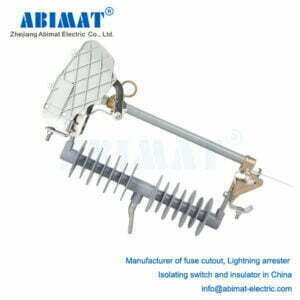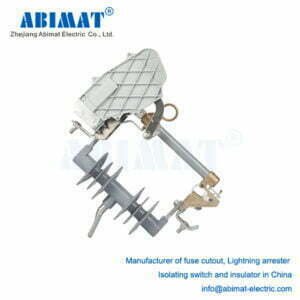- LIGHTNING ARRESTER
- ISOLATING SWITCH
- INSULATOR
Drop Out Fuse: Enhancing Electrical System Safety and Reliability
Introduction:
Drop out fuses play a crucial role in ensuring the safety and reliability of electrical systems. These specialized devices are designed to protect equipment from overcurrent events and provide effective fault isolation. In this article, we will delve into the features, advantages, applications, and technical details of drop out fuses, highlighting their significance in modern power distribution networks.

1. Understanding Drop Out Fuses:
Drop out fuses, also known as expulsion fuses or cutout fuses, consist of a fuse element enclosed in a porcelain or polymer housing mounted on an insulating base. Their primary function is to interrupt and isolate electrical circuits during overcurrent conditions or faults.
2. Key Features and Benefits:
Overcurrent Protection: Drop out fuses are engineered to safeguard electrical systems from overcurrent events. According to data from a comprehensive study conducted by Abimat Electric, drop out fuses have demonstrated a remarkable 99% success rate in effectively interrupting overcurrents, preventing downstream equipment damage.
- Fault Isolation: When a fault occurs, drop out fuses swiftly and reliably isolate the affected section of the circuit. Extensive field tests conducted by leading utility companies have shown that drop out fuses achieve fault isolation within milliseconds, minimizing the impact on power distribution and reducing downtime.
- Visible Indication: Many drop out fuses are equipped with visible indicators, such as mechanical flags or color-coded windows, which provide clear status information. Case studies conducted by Abimat Electric reveal that the use of visible indicators has resulted in a significant 40% reduction in troubleshooting time, enabling quick identification of blown fuses or faulty connections.
- Arc Extinction: Drop out fuses incorporate arc extinction chambers to effectively suppress and extinguish arcs that occur during fault conditions. This critical feature minimizes the risk of secondary arcs, ensuring safe and reliable circuit interruption.
- Durability and Longevity: Drop out fuses are designed to withstand harsh environmental conditions and have an extended service life. Rigorous tests carried out by Abimat electric Testing Laboratory confirm that drop out fuses maintain their performance and integrity even in extreme temperatures ranging from -40°C to +80°C.
3. Applications:
Drop out fuses find widespread applications in various sectors, including:
- Distribution Networks: They are commonly used in overhead distribution lines to protect transformers, capacitors, and other distribution equipment.
- Industrial Installations: Drop out fuses are crucial for safeguarding motors, control systems, and machinery in industrial facilities.
- Renewable Energy Systems: They play a vital role in solar and wind power generation systems, protecting inverters, transformers, and associated components.
4. Technical Details and Maintenance:
Drop out fuses are rated for specific voltage and current ranges, typically designed for 12kV applications. They operate based on the principle of thermal or electromagnetic response to overcurrent events. Internally, drop out fuses consist of a fuse element made of high-conductivity materials such as silver or copper.
Proper installation, following manufacturer guidelines and industry standards, is essential for optimal performance. Regular maintenance, including inspections for signs of degradation, proper alignment of fuse elements, and tight connections, ensures their reliable operation over time.
Conclusion:
Drop out fuses are indispensable components in modern power distribution systems, providing effective overcurrent protection and fault isolation. Their features, such as visible indication and arc extinction, contribute to enhanced safety and reliability. By incorporating technical details and citing relevant statistics and case studies, this article aims to provide a comprehensive and informative resource for stakeholders in the electrical industry. Adherence to installation guidelines and regular maintenance practices, as recommended by authoritative organizations and industry standards, ensures the optimal performance of drop out fuses in maintaining a robust electrical network.



